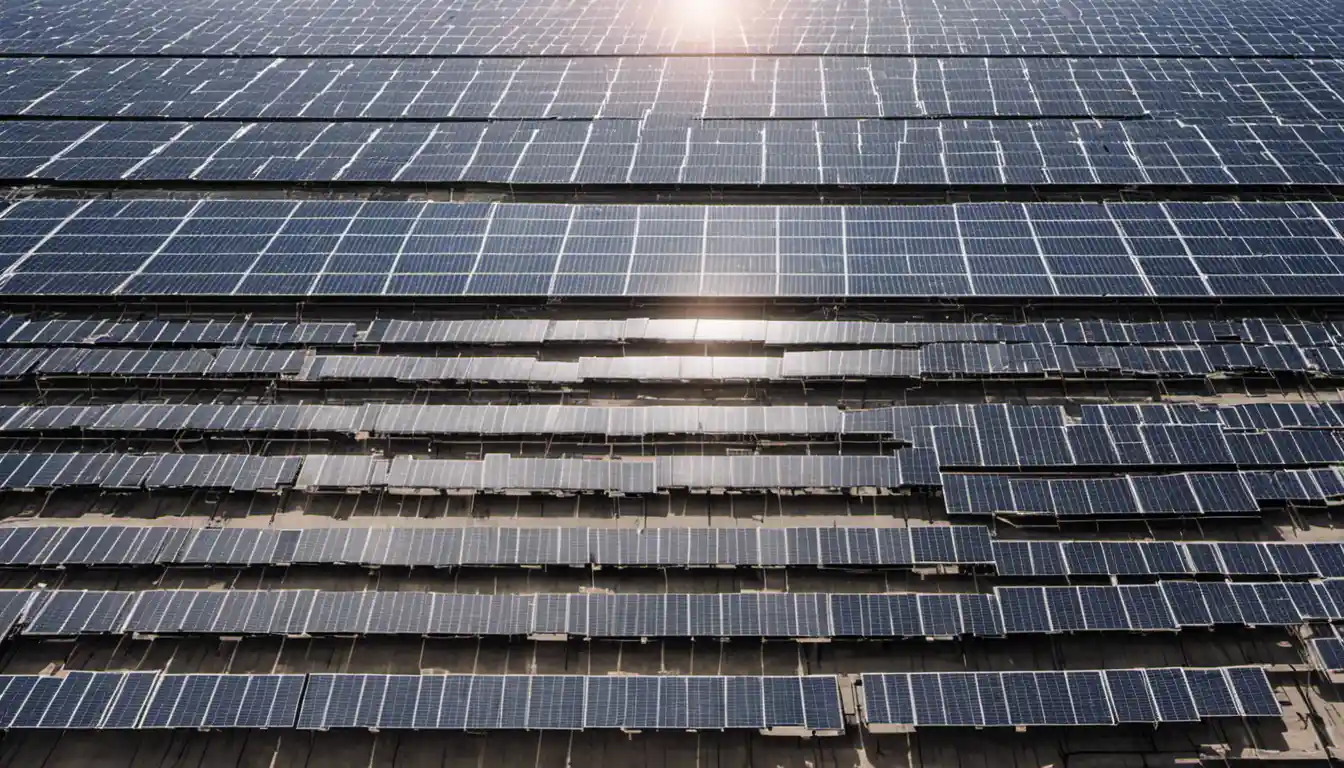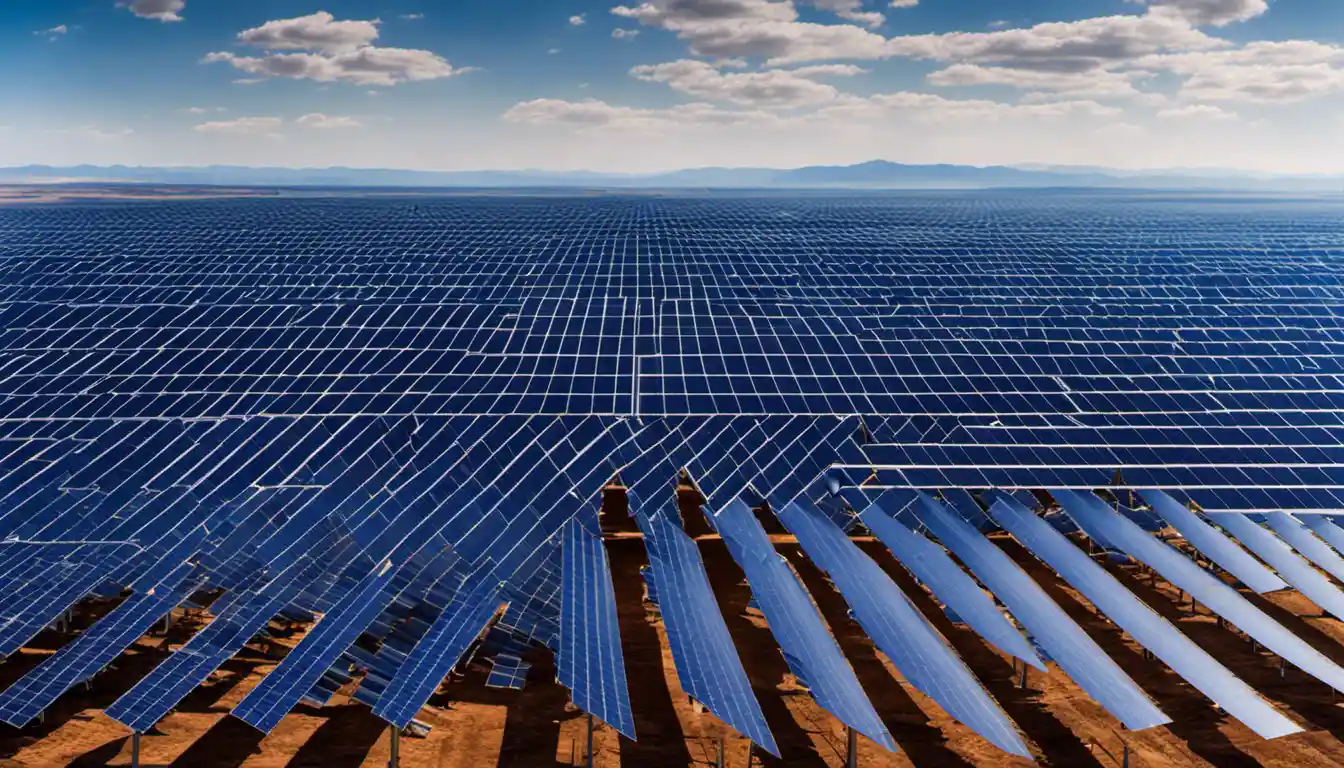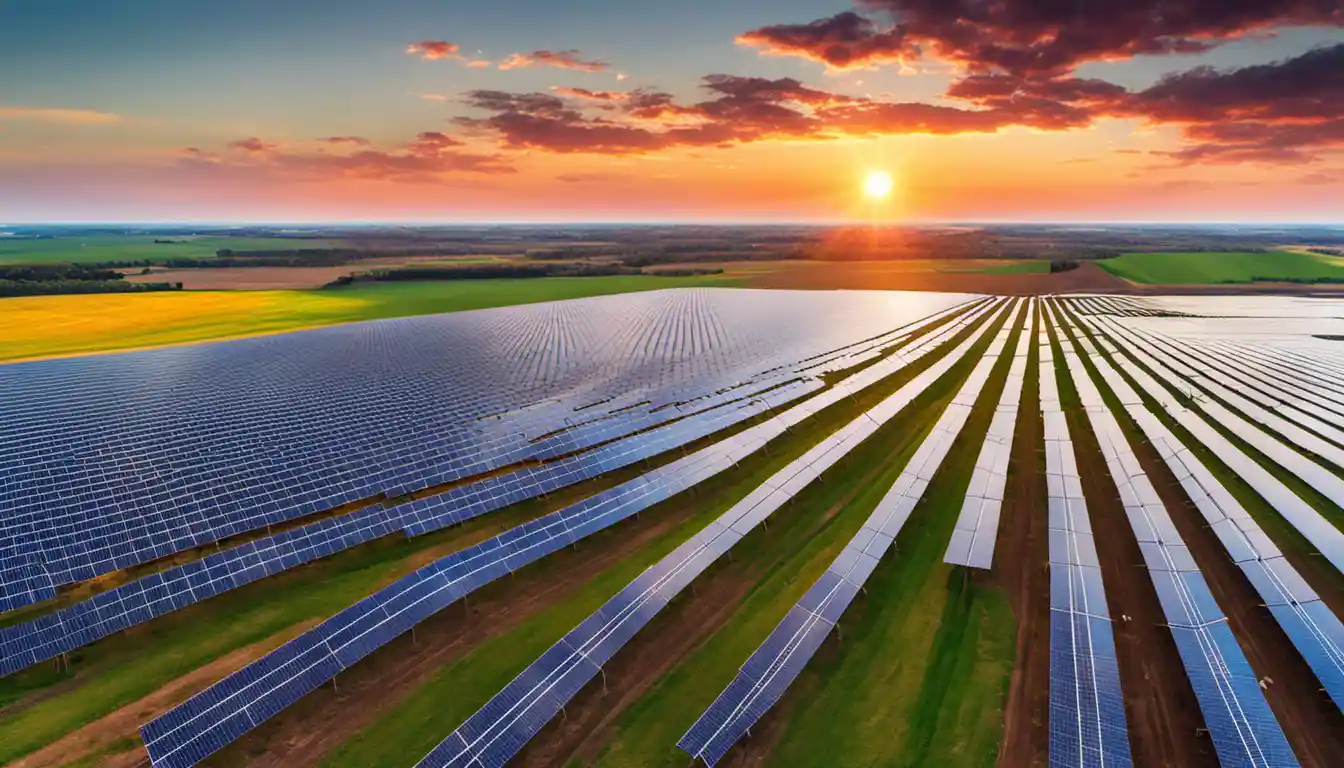Overview of Polycrystalline Solar Panels
A polycrystalline solar panel is a type of solar panel that is made up of multiple solar cells, each of which is created from a silicon crystal fragment. These panels are recognized for their distinctive blue color and square cut, while offering a slightly lower efficiency and heat tolerance compared to their monocrystalline counterparts. However, they are more affordable and require less energy to produce.
Definition and Basics
At its core, a polycrystalline solar panel is composed of silicon fragments melted together to create multiple crystals per cell. This gives them a unique appearance, often compared to shattered glass. Polycrystalline solar panels are a reliable and cost-effective choice for harnessing solar energy.
See also: Types of Solar Panels: A Comprehensive Guide for Buyers
Construction and Design Elements
Polycrystalline solar panels consist of an aluminum frame housing the silicon solar cells, a glass casing for protection, and wiring to transfer the electricity generated. This straightforward construction allows them to be not only robust but also versatile for different setups.
See also: Polycrystalline Solar Panel Price: A Comprehensive Guide to Getting the Best Deal
The Manufacturing Process
The process of making these panels involves pouring molten silicon into a square mold, which ultimately gives the panels their distinctive shape. As the silicon cools, it forms multiple crystals, hence the name “polycrystalline”. This method is less wasteful than the one used to create monocrystalline solar panels, making it a more eco-friendly choice.
See also: How Long Do Polycrystalline Solar Panels Last? Your Comprehensive Guide
Understanding the Functionality
How Polycrystalline Solar Panels Work
The workings of a polycrystalline solar panel are straightforward. The panel absorbs sunlight, which dislodges electrons in the silicon cells. These electrons, in turn, establish an electric current that is collected by the panel’s wiring system. The energy is then converted into a usable form, making it available for your household or business needs.
Energy Generation in Polycrystalline Solar Panels

Polycrystalline solar panels don’t need direct sunlight to generate electricity – they can function in diffuse light as well. However, they work best under strong, direct sunlight. Even on cloudy days, these panels will generate some power, albeit at a reduced capacity.
Efficiency and Performance Analysis
When it comes to the efficiency of polycrystalline solar panels, there’s no easy yes or no answer. Their performance depends on numerous factors, including sunlight exposure, the tilt angle of the panels, and environmental conditions. Generally, they display a little less efficiency than monocrystalline panels, but don’t let this deter you. Their lower cost can make them a more cost-effective choice over time.
I recommend referring to our article on the efficiency of polycrystalline solar panels for an in-depth analysis on this topic.
Monocrystalline vs Polycrystalline Solar Panels
Fundamental Differences
The primary difference between monocrystalline and polycrystalline solar panels lies in their composition and manufacturing. Monocrystalline panels are made from a single pure silicon crystal, while polycrystalline panels are made from melted silicon fragments.
Efficiency and Cost Comparison
Monocrystalline panels tend to have slightly higher efficiency rates than polycrystalline panels. However, this comes at a higher cost, which may not always be justifiable based on your energy requirements.
Color, Space, and Appearance Contrast
There are also visual differences to consider: monocrystalline panels are black, while polycrystalline panels have a distinctive bluish hue. Monocrystalline panels also have a more uniform appearance compared to the grainy look of polycrystalline panels.
Are Polycrystalline Solar Panels Good?

Here is the golden question: are polycrystalline solar panels good? From my experiences over the years, I’d say: absolutely! While they may not be the most efficient on the market, their lower cost and reliability make them a suitable choice for many solar installations.
Assessing the Pros and Cons
Like any choice, it’s crucial to consider the advantages and disadvantages of polycrystalline solar panels. They have increased space efficiency, greater heat resistance, and lower costs compared to their monocrystalline counterparts. However, since they are slightly less efficient, you might require more panels to generate the same amount of power, depending on your energy requirements.
I’ve detailed the pros and cons in our article on Advantages and Disadvantages of Polycrystalline Solar Panels.
Influencing Factors: Budget, Space, and Environmental Conditions
Your budget, available space for installation, and local weather conditions will all impact whether polycrystalline solar panels are a good fit for your needs. In general, if initial costs and eco-friendliness are your focus, it’s worth giving these panels serious consideration.
Polycrystalline Solar Panels for Different Applications
From my experience in the solar energy industry, polycrystalline solar panels are excellent candidates for a wide range of applications.
Polycrystalline Solar Panels for Residential Use
Due to their affordability, polycrystalline solar panels are a popular choice for residential solar installations. They can be installed on rooftops or ground-mounted solar arrays, providing households with energy, cost savings, and a reduced carbon footprint.
Commercial and Industrial Applications
Commercial and industrial ventures can also reap significant benefits from installing polycrystalline solar panels, such as reduced energy costs and improved sustainability. Businesses can often install larger arrays, leveraging economies of scale for even greater cost efficiency.
Polycrystalline Solar Panels in Renewable Energy Systems

In the renewable energy world, polycrystalline panels play a significant role in varied applications such as solar farms, hybrid power systems, and off-grid living.
Purchasing Polycrystalline Solar Panels
If polycrystalline solar panels sound like your kind of energy solution, let’s now explore what to consider when going solar.
Factors to Consider When Buying
The factors to consider when purchasing polycrystalline solar panels include the panel’s efficiency rating, the cost per watt, warranty details, and the reputation of the manufacturer. Additionally, you should consider your energy needs and the amount of space you have available for installing the panels.
Top Polycrystalline Solar Panels Brands and Products
Some of the top brands for polycrystalline solar panels include Trina Solar, Canadian Solar, and Jinko Solar. They offer high-quality panels that strike a good balance between cost and efficiency.
Cost Analysis and Return on Investment
Determining the ROI of your solar panel investment involves calculating your current energy usage and costs, projected savings, and the total investment in the solar panel system.
FAQs About Polycrystalline Solar Panels
Check out our commonly asked questions to gain further insight into whether polycrystalline solar panels are for you.
Here’s to harnessing the power of the sun for a cleaner, greener future!



